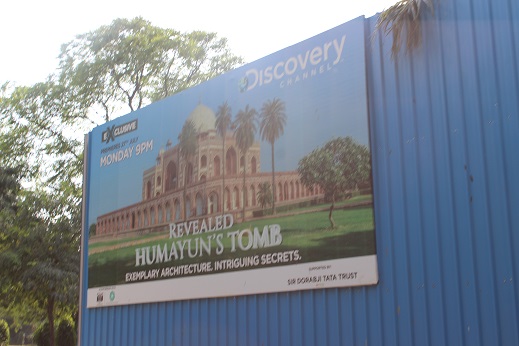
When I travel to a new city, I usually look first at what historical sites are important to see. In the case of cities like Rome, Paris and now Delhi, I have to get picky because you could literally spend a month just visiting important historical sites.
With thousands of years of history, trying to gain perspective on what happened when, is really difficult and I was now forced (in my writing of my blogs) to find a time line that would shed some light on the what I was seeing, but also put into perspective what else was happening in other parts of the world. Well this has been quite a feat but with the help of a time line I found in the book A Brief History of India by Alain Danielou, I have been able to wrap my mind around some of this. I will share this edited timeline in another blog (mostly for my families sake, we are big history buffs, all of us, and in our travels have seen many of the world’s most famous sites. Just fun to see how it lays out in time). But for now, let me lift a section of time between 1526 and 1857, a time known as the Mughal Dynasty, before moving on to my next historical site visit of Humayuns Tomb.
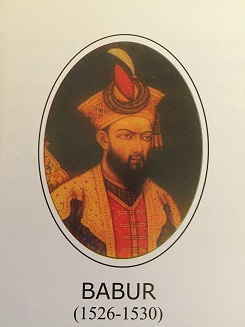
The Mughal Empire ranged from 1526-1857. The story begins with Babur (1526-1530) who was enticed to come to India after hearing of stories about Timur (the fierce warrior and also his ancestor) and how he had come to India (1398) and plundered almost all the wealth and the finest craftsmen and then took them back to Samarkand (now in Uzbekistan). It took five attempts to conquer and take over India. Babur, the first of the Great Mughals, lived in Agra and made it a city of gardens. The gardens of Ram Bagh and Zohra Bagh are all that remain today.
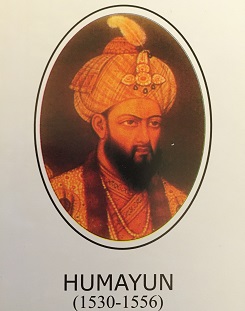
After his death in 1530, his son Humayun ascended the throne. He was defeated by SherShah and fled to Sind (lower Pakistan along the Indus River). He spent 15 years in exile but during this time in 1542 his son Akbar was born in Umarkot, Pakistan. Humayun, along with a borrowed Persian army, returned to India in 1555 and regained power. Unfortunately he died shortly after in 1556. More about Humayun in a minute.
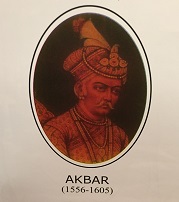
Humayun’s son Akbar, now only thirteen ascended the throne, flanked by his guardian Bairam Khan. After some time he took over the whole charge. Agra rose to prominence during the reign of Akbar. He built the Fort and made Agra the seat of one of the mightiest and richest kingdoms. Akbar had over 300 wives but was not lucky enough to have a son. To fulfil his wish of having a son he went to seek the blessing of Sheikh Saleem Christi, a famous saint who resided in Sikri near Agra. He had a baby boy. Whom he named Salim, later who was known as Jahangir.
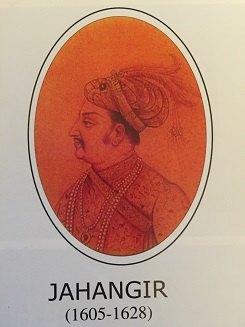
Jahangir became a great scholar of Hindi, Arabian, Turkish and Persian. Impatient for power, however, he revolted in 1599 while Akbar was engaged in the Deccan. Jahangir was defeated, but ultimately succeeded his father as Emperor in 1605 because of the immense support and efforts of the ladies in Akbar’s harem, and his grandmother. The ladies wielded considerable influence over Akbar and favored Jahangir as his successor. He got married to Nur Jahan who Jahangir had admired for years but who had married someone else. Her husband was later killed, some say at the request of Jahangir, however, there is no proof of recorded evidence. Widowed, Nur was brought to Agra along with her nine-year-old daughter and placed in—or refused to be placed in—the Royal harem in 1607. Jahangir married her in 1611 and gave her the title of Nur Jahan or “Light of the World”.

In 1628 Jahangir died and Shahjahan ascended the throne. It was during his reign that Agra reached the peak of its glory as the city of immortal architecture. This period found expression in a style of architecture of exceptional splendor carried to the highest degree of perfection. Shahjahan built much of the Fort, most of the buildings of the city and the Taj Mahal. It was an age of marble and much of the sandstone buildings in the city were replaced by marble in its most refined form. Shahjahan resided in Agra from 1632-1637 and renamed the city Akbarabad. The name however did not endure.
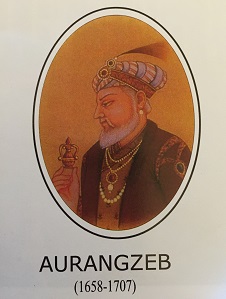
In 1658, Shahjahans son took over the reign. He was considered a notable expansionist and the Mughal Empire temporarily reached its greatest extent. Aurangzeb was not such a nice guy. It was in Agra that he imprisoned his father, destroyed the temples, and tried to impose Islam on all the people of his kingdom.
There were 17 Mughal Emperors all together:
- 7th Bahadur Shah I (1707-1712)
- 8th Jahandar Shah (1712-1713)
- 9th Farrukhsiyar ((1713-1719)
- 10th Rafi ud-Darajat (February 1719-June 1719)
- 11th Shah Jahan II (June 1719-Sept 1719)
- 12th Muhammad Shah (1719-1748)
- 13th Ahmad Shah Bahadur (1748-1754)
- 14th Alamgir II (1754-1759)
- 15th Shah Alam II (1760-1806)
- 16th Shah Akbar-Abdullah II (1806-1837)
- 17th Bahadur Shah Zafar (1837-1857)
There are many reasons for the downfall of the mighty Mughal Empire. The mighty empire, which was founded by Babur, and strengthened by the wit and wisdom of Akbar, the great; the same empire which was given the sense of justice by Jahangir and luster and fashion of Nur Jahan; which was immortalized by Shahjahan by constructing the Taj Mahal, could not be retained by the unwisely and intolerant policy of Aurangzeb. All the successors of Aurangzeb were incompetent. Aurangzeb wanted to divide his kingdom amongst his three sons. Built like a tradition of Mughal family, all the tree started a struggle for the throne, ultimately, Prince Muajjam defeated the remaining two brothers in 1707 A. D. and he ascended the throne with the title of Bahadur Shah. But after a short spell of only five years, he died in Lahore in the year 1712 A.D.
During the later Mughals, there were so many incompetent successors in the Mughal Dynasty, that one after the other, were crowned and decrowned, even by their petty court nobles like Saiyyad Brothers until 1857 A.D. Thus the Mughal rulers ruled India for name only up to 1857 when ultimately they were routed by the British from the throne. (Wikipedia; Taj Mahal, by H.N. Aswani)
Now that you have a little history and context about Humayun, on to visit his tomb.
Purana Qila
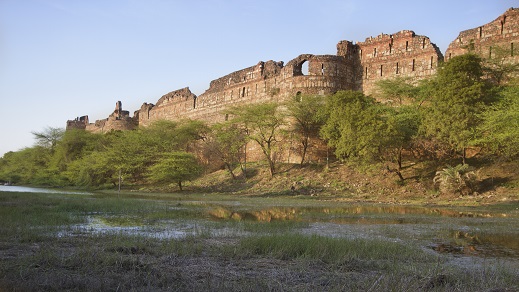
Emperor Humayun, son of the first Mughal, Babur, ascended the throne of Delhi in 1530. Three years thereafter he laid the foundations of a city he named Dinpanah, or the refuge of the Faithful. The inner citadel of this city is today known as Purana Qila (Old Fort). Within six years, Humayun was ousted by Sher Shah Sur (1538-45) who promptly renamed the city Shergarh. Sher Shah destroyed Dinpanah and raised a citadel on the same site.
The first six years of Humayuns reign were wrought with continuous strife with provincial governors, not to mention the constant pressure of the Sur sultan. Quite naturally in these circumstances he had no time for artistic or architectural pursuits. So though he laid the foundations of his citadel, it is not known how much building activity had taken place at the site during those years, or how much Sher Shah actually destroyed when he took it over. What is known is that there are no currently standing buildings from Humayuns first stint as emperor.
The Purana Qila had many buildings, most of them we did not visit due to time restrictions, but the major ones were most beautiful.
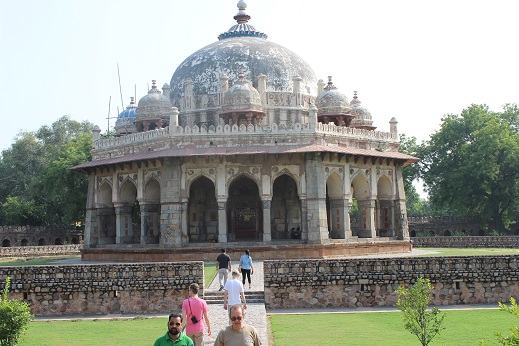
Isa Khan’s Garden Tomb
Isa Khan (c. 1529 – September 1599) was a Muslim Rajput chief who led the Baro Bhuiyans (twelve landlords) and a Zamindar of the Bhati region in 16th-century Bengal. Throughout his reign he resisted the Mughal empire invasion. It was only after his death that the region fell totally under Mughal control.
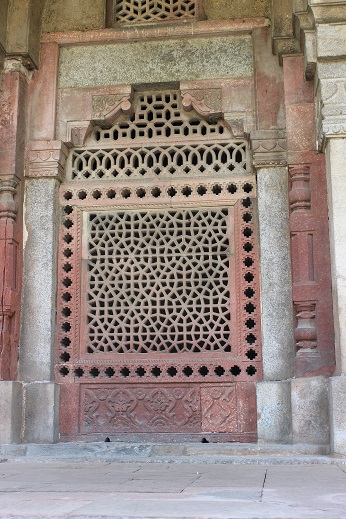
This tomb pre-dates Humayuns Tomb by two decades and is the culmination of an architectural style used for royal tombs in Delhi during the Sayyid and Lodi dynasties from the early 15th to the early 16th centuries.
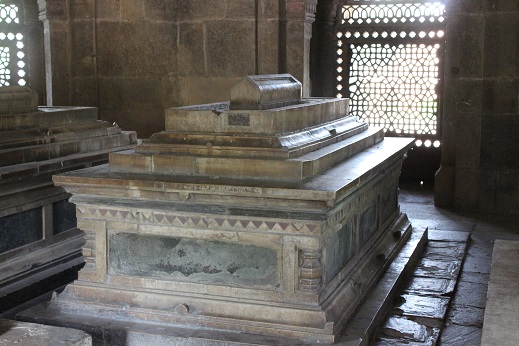
It is the only surviving octagonal enclosed tomb complex with walls, mosque, and gateway intact. It is also a World Heritage Site.
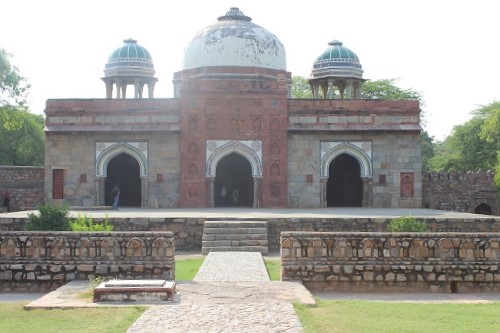
The mosque of Isa Khan stands immediately to the west of the tomb inside the same enclosure-walls.
The Gardens of the Mughals
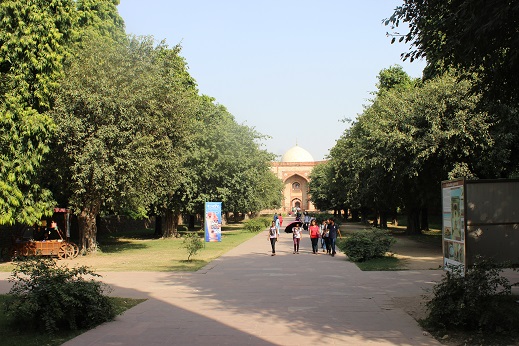
The concept of paradise as a garden is one of mankind’s oldest ideals. The image of a place of perfect eternal peace and plenty can probably help make a difficult temporal existence meaningful and its transitory nature acceptable. The paradise promised in the Quran consists of several terraces of gardens, each more splendid than the last.

The ancestor of the Mughals, Timur, took great pride in the gardens he built. Timur’s gardens, within which were rich encampments decorated with plunder from captive nations and his throne over the watercourses representing the four rivers of life, became famous world-wide.

These are the gates you enter before seeing the tomb. This seems to be the architectural style, as with most tombs I have visited, the gates are almost as awesome as the tombs themselves. Most tomb complexes have four gates, one in each direction. Back in the day only certain people were allowed through certain gates, each designated for a particular group, be it royalty, visiting dignitaries and even just the commoners. Now usually only one gate is open to the public for security reasons. Most of the time, I found however, that even though you may walk through a security screener, like at the airport, they did not seem to be turned on.
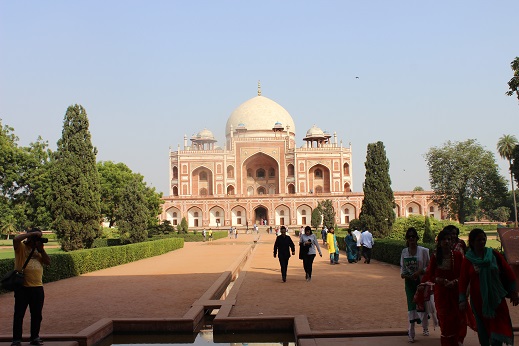
The life of Humayun, the second of six Mughal emperors, was marked by struggle and vicissitude. He ascended to throne of Delhi after the death of his father, Babur, in 1530. The Mughal Empire was not yet firm on its foundation, and Humayun had to suppress a number of rebellions at the outset of his reign. Early success was followed by prolonged disaster. In 1539, Sher Khan, an Afghan nobleman who ruled over tracts of what is now Bihar and Bengal, rose victoriously against him and the vanquished emperor fled the country. He spent 15 years in exile, some of them at the court of Shah Tahmasp of Persia, and in 1555 returned with a borrowed Persian army, recovered his lost dominion and reestablished the Mughal Empire. He did not long survive his return and died on January 19, 1556, after a fall on the steps of his library in Sher Mandal, a monument inside what is today called Purana Qila.
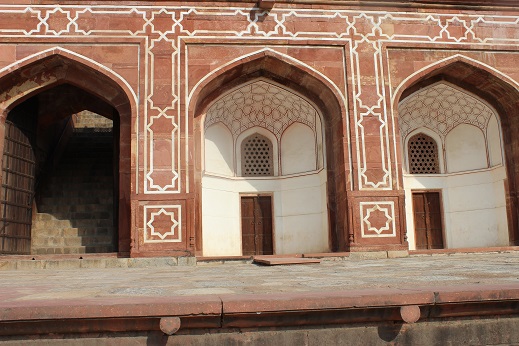
To enter, you climb up these extremely steep stairs to a rooftop balcony. (see stairs on the left-hand side of the picture)
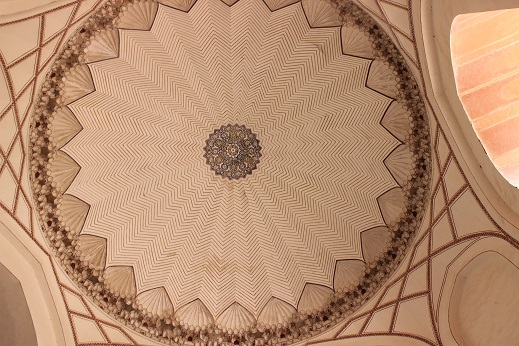
Inside the domes, like in most of these historical sites, are just beautiful. I think they must have felt that with the tomb setting right under them, that the view from the tomb was like looking at heaven.
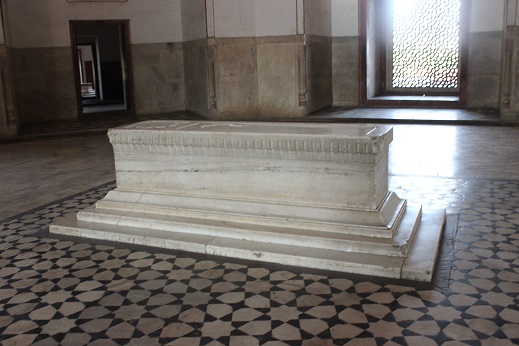
Here is a picture of his tomb, but if you look down the doorway to the left, you can see that there are other rooms with other tombs in them. This seems quite common also here in Delhi.
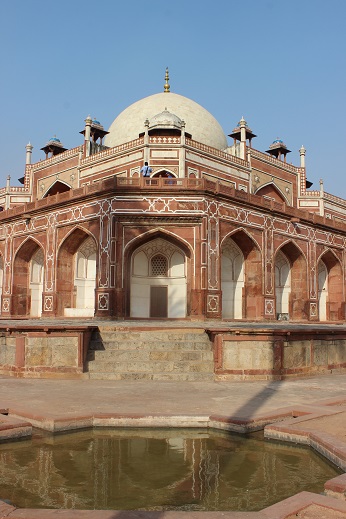
Like with all the other historical buildings, water played a large and important role. Not only was the water used for cooling inside as a functional entity, but also as “reflective pools”, which you will appreciate when we visit the Taj Mahal.
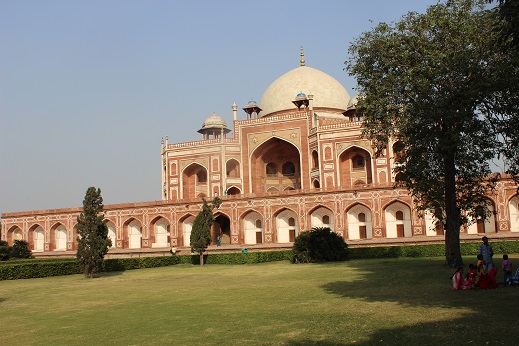
One last look as we left the grounds and headed back to the hotel.
Thanks for reading and sharing. I hope you did not mind the short history lesson of which of course was very short form. Much of the information was found in the World Heritage Series booklet for Humanyun’s Tomb.
Now onto the Ashram…
